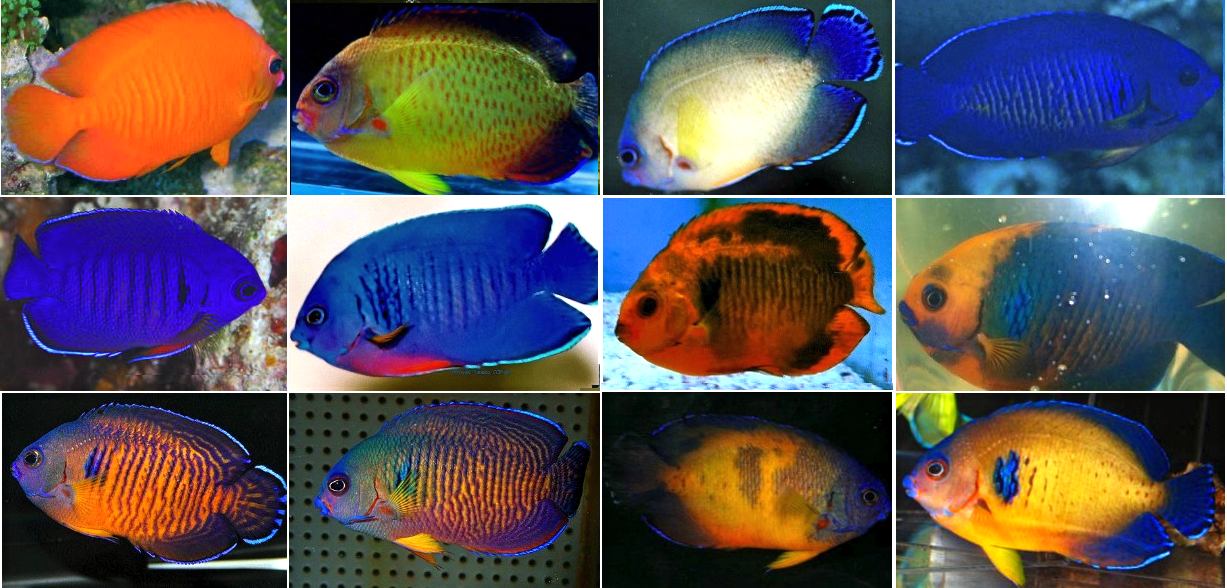This is the third post on the diversity and forms of reef fish, and this time on the ubiquitous and highly variable Centropyge bispinosa; also known as the Coral Beauty Angelfish. The standard issue coral beauty is a good mix of orange and navy but as you will see in this post, it also comes in a wide array of colors from solid orange, to solid white, to yellow to blue and also some really funky aberrant ones.

Although the coral beauty angelfish comes in an assortment of colors, not all are commonly encountered in the wild and in the trade. Full blue or full orange coral beauties are one of a kind and only a few specimens have ever been seen. It also appears that this species also exhibit some form of geographical variation in the specimens observed in Mauritius.
By now, most would have heard of the tiger tail coral beauty coming from there. It seems that not all, but most specimen from this region sport tiger like stripes on the tail and all over the body, lending a really cool and neat touch to the otherwise standard looking Centropyge. Deepwater morphs to this species have also been collected from Vanuatu, Indonesia, Philippines etc and they are usually a solid yellow-orange or pale cream color. While these deepwater morphs and other aberrant koi colored varieties have been known to revert back to their original colors in captivity, there are a few cases where they have been successfully maintained in reef aquaria for reasons yet to be known.


As mentioned before, solid colored coral beauties do exist but the odds of finding one for sale is next to none. Not to mentioned the exorbitant price that would most probably come with it. The insanely orange specimen headlining this post above from Samoa is one of a kind. Such solid orange morphs have entered the trade only a handful of times and so far most of them have been able to retain the color very well, unlike some off colored variants which are notorious for losing these aberrant colors.
Full blue specimens are also just as spectacular, but those without stripes such as the one pictured on the left are far more unique. How then do we tell if an abnormally colored fish is a result of permanent genetics or a transient color form due to environment or diet? We are not sure of that for now, and that’s just something the coral beauty angelfishes know that we don’t.




